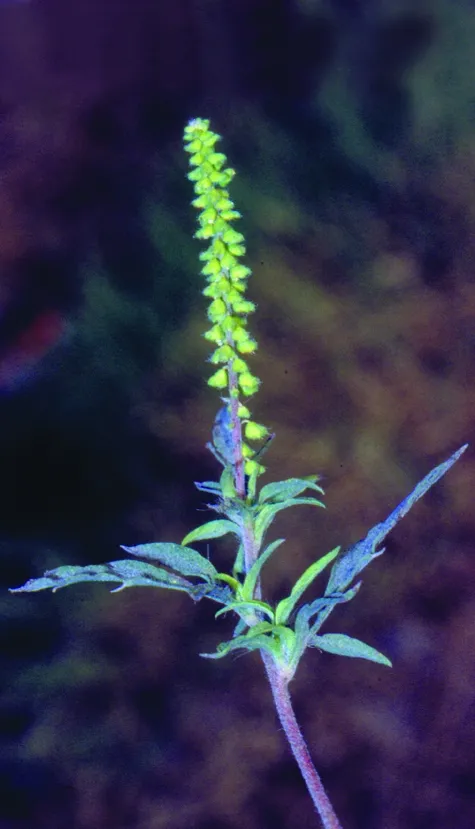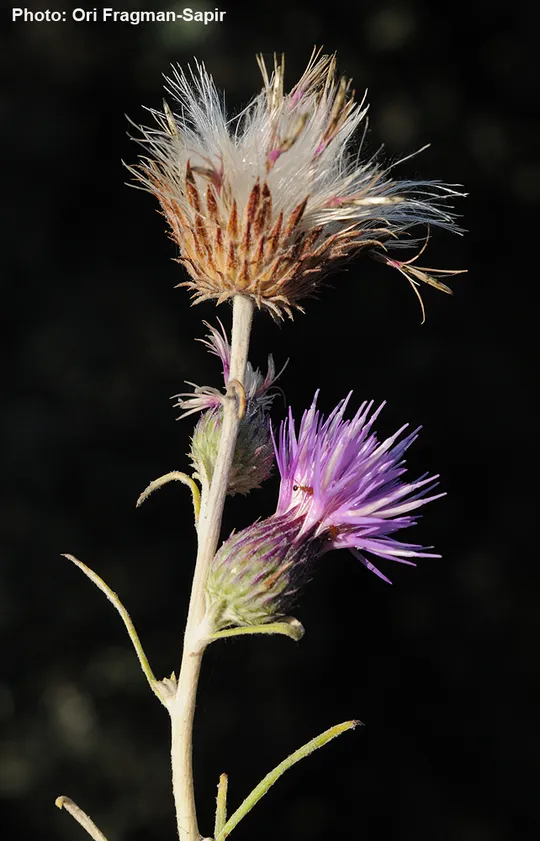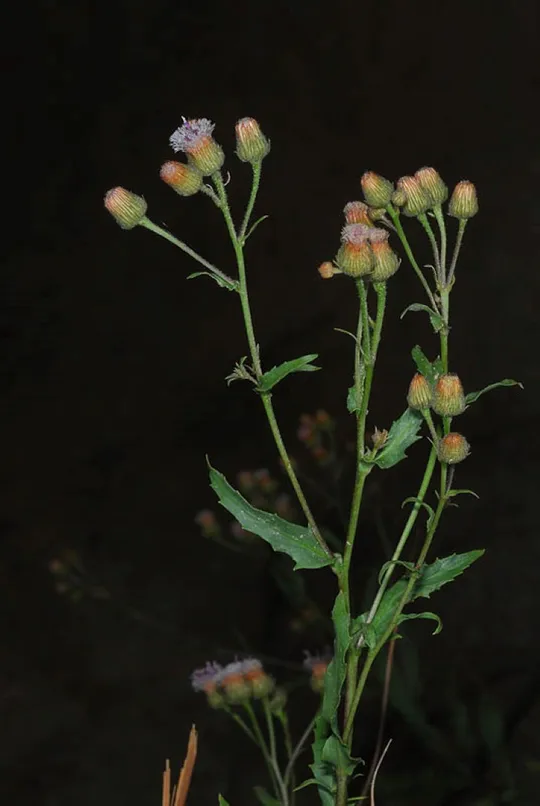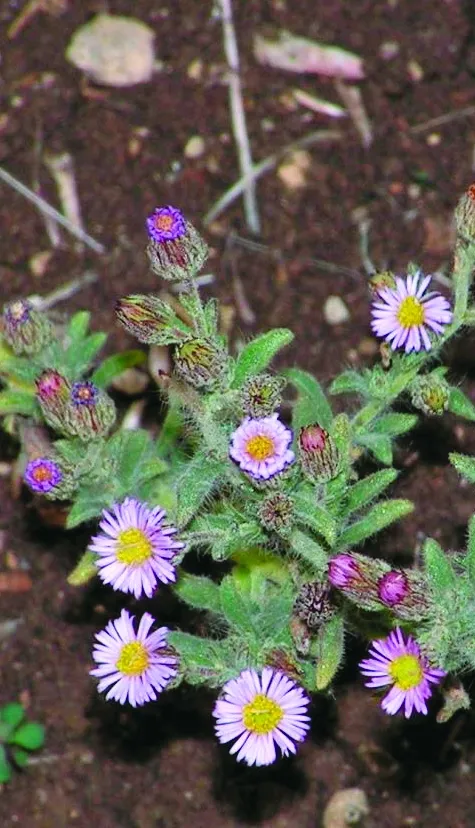Racemed Carline Thistle
Carlina racemosa

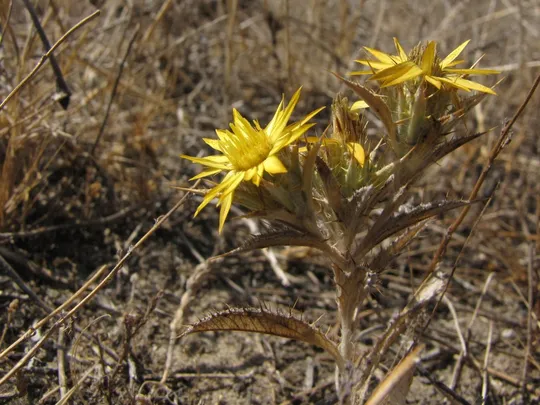
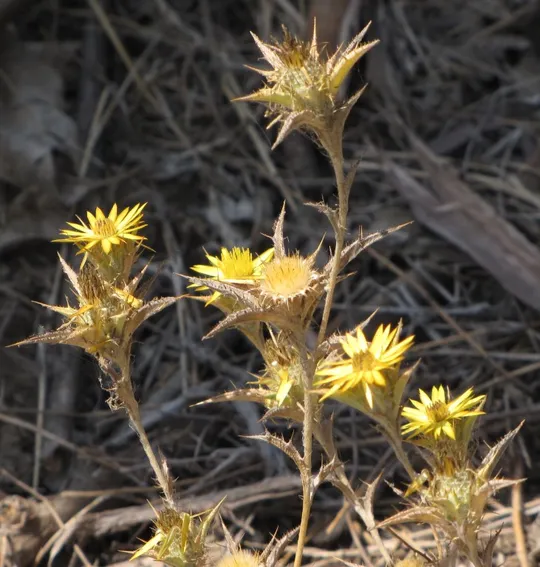
Carlina racemosa is found in the
Sharon only in Ahu Binyamina, where a beautiful population still exists in a
fallow site below a power line on heavy soil: Noam and Amnon Avitzel found it
again and photographed it recently (09.08.2010). C. racemosa was collected once in Hadera in 1927, but has not been found there
again since then.
Seasonal winter
ponds on heavy clay soil that dries in the summer.
The genus Carlina is an herbaceous thorny genus
in the Asteraceae
(Compositae) family that includes about 30 species found mainly in
Mediterranean countries, in the Canary Islands and on other islands in the
Atlantic Ocean. The genus diversity centers are in Spain and the Canary Islands
and in the Near East. Thirteen species grow in Europe and 15 species grow in
the Middle East. A few species grow in the Euro-Siberian and Irano-Turanian
areas. The inner involucral bracts of the capitulum that are like ray florets that surround the capitulum, which is entirely
composed of disc florets, are characteristic of the genus. These involucral bracts
help advertise the capitulum throughout its flowering period. In most species,
their color is yellow to cream but in some, such as C. lanata they are pink.
All the Carlina species bloom in summer. C. racemosa is an example of a small group
of Mediterranean plants whose center of distribution is in the western
Mediterranean and appears in Israel considerably disjunct from its main range.
Other species in this group are Coredylocarpus muricatus,
Antirrhinum siculum and Sonchus suberosus. Such a pattern is a result of either long-term
random distribution or it represents a relict of a period in which western
Mediterranean plants were more common in the eastern Mediterranean. There are
five species of Carlina in Israel, which are divided into two groups –
three perennial herbaceous species which are very closely related: C. curetum in the Mediterranean region, C. libanotica in the transition zone shrublands
and the Negev Highlands and C. alatum in the montane and tragacanth zones on the Hermon.
In ecotones (geographical transitions) there are transitional populations; some
tend to group them in one species and afford them the status of subspecies. The
second group includes two annual (or maybe biennial) species: C. lanata and C. racemosa. The
first grows on heavy soils in the mountains and northern valleys, and the other
in seasonal ponds on the coastal plain. The inner involucral bracts of C.
racemosa are yellow and those of C. lanata are shiny pink. C. racemosa
is similar to C. curetum but differs from it in that it is a western
Mediterranean annual and its inner yellow involucral bracts are much longer
than the diameter of the capitulum flowers. In addition, the capitula that are
not extreme are sessile and stems branch out close to the base of the capitulum.
The Flora of Europe notes that occasionally short-lived perennial plants are
found in the population.
·
Carlina racemosa
is an extremely rare plant whose distribution has decreased from two sites to a
single site.
·
The population at
the site is extremely small (17 plants in 1994). .
·
The vulnerability
of seasonal winter pools raises the question of the continued survival of the
population. The small population size at the site poses a threat in itself, due
to limited reproduction, genetics and random extinction.
·
Ahu Binyamina is
located in a proposed, undeclared nature reserve.
·
The plant is
located in the western Mediterranean Basin and is not threatened there. The threat
is local, and applies only to the single population in the eastern
Mediterranean, that appears only in Israel.
The Ahu Binyamina Carlina racemosa
population should be monitored and studied to understand its long-term
demographic trends, the correct management for sustainable preservation and to determine
if the plant is an annual or monocarpic, i.e plants that live more than one
year following several years of vegetative growth and then blossom and die. Ahu
Binyamina should be declared a nature reserve and a suitable water regime ensured
for C. racemosa and other unique plants that grow
there.
Carlina racemosa has a western
Mediterranean distribution: it grows in Portugal, Spain, Malta, Algeria,
Tunisia, the Balearic Islands, Sardinia and Sicily.
Carlina racemosa is an annual
plant of coastal plain winter ponds growing on only one site in Israel, in a
habitat that has deteriorated and is vulnerable to additional damage. It is
most important to preserve the C. racemosa population, as it is the only
population of a western Mediterranean species that is located in the eastern
Mediterranean Basin.
Current Occupancy Map
| 1000 squre meter pixel | 5000 squre meter pixel | 10000 squre meter pixel | |
|---|---|---|---|
| number of observations | 0 | 0 | 0 |
| in total pixels | 0 | 0 | 0 |
| Family | Asteraceae |
| Classification | On the endangered species list |
| Ecosystem | Mediterranean |
| Chorotype | Western Mediterranean |
| Conservation Site | Ahu Binyamina |
| Rarity |
1
6
6
|
|---|---|
| Vulnerability |
0
4
4
|
| Attractiveness |
0
0
4
|
| Endemism |
0
0
4
|
| Red number |
1
5.8
10
|
| Peripherality | W |
| IUCN category | DD EW EX LC CR EN VU NT |
| Threat Definition according to the red book | Critically endangered |
 Based on:
Based on:
